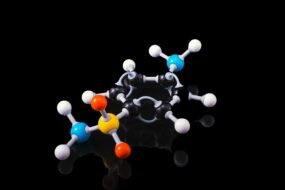- Home
- DRUGS
- Drugs acting on infectious Agents
- Clofazimine (Clo)
Clofazimine is a dye with leprostatic and anti-inflammatory properties. It is specifically used to treat multibacillary leprosy and erythema nodosum leprosum. Used as a component of multi-drug therapy of leprosy.
When the drug is used alone, its clinical response is slower than that of dapsone, and resistance develops in 1 to 3 years.
Mechanism of action.
- Interferes with the template function of DNA in M.leprae. Alters the membrane structure and its transport function.
- Disruption of the mitochondrial electron transport chain.
Pharmacokinetics.
- Orally active, and 40–70% is absorbed.
- It accumulates in the macrophages and gets deposited in tissues, including subcutaneous fat, as needle-shaped crystals.
- However, its entry into CSF is poor.
- The half-life is 70 days, so intermittent therapy is possible.
Adverse effects
a) Skin
- Reddish-black discolouration of the skin, especially on exposed parts.
- Discolouration of hair and body secretions also occur.
- Dryness of the skin and itching
- Acneform eruptions and phototoxicity occur.
- Conjunctival pigmentation.
b) GIT
- Nausea, anorexia, weight loss, abdominal pain, and enteritis with intermittent loose stools.
Contraindication.
- The drug should be avoided during early pregnancy and in patients with liver or kidney damage.
Dosage.
CLOFOZINE, HANSEPRAN 50, 100 mg capsules.












